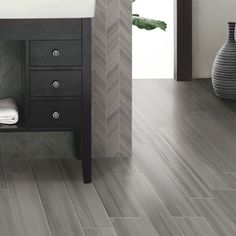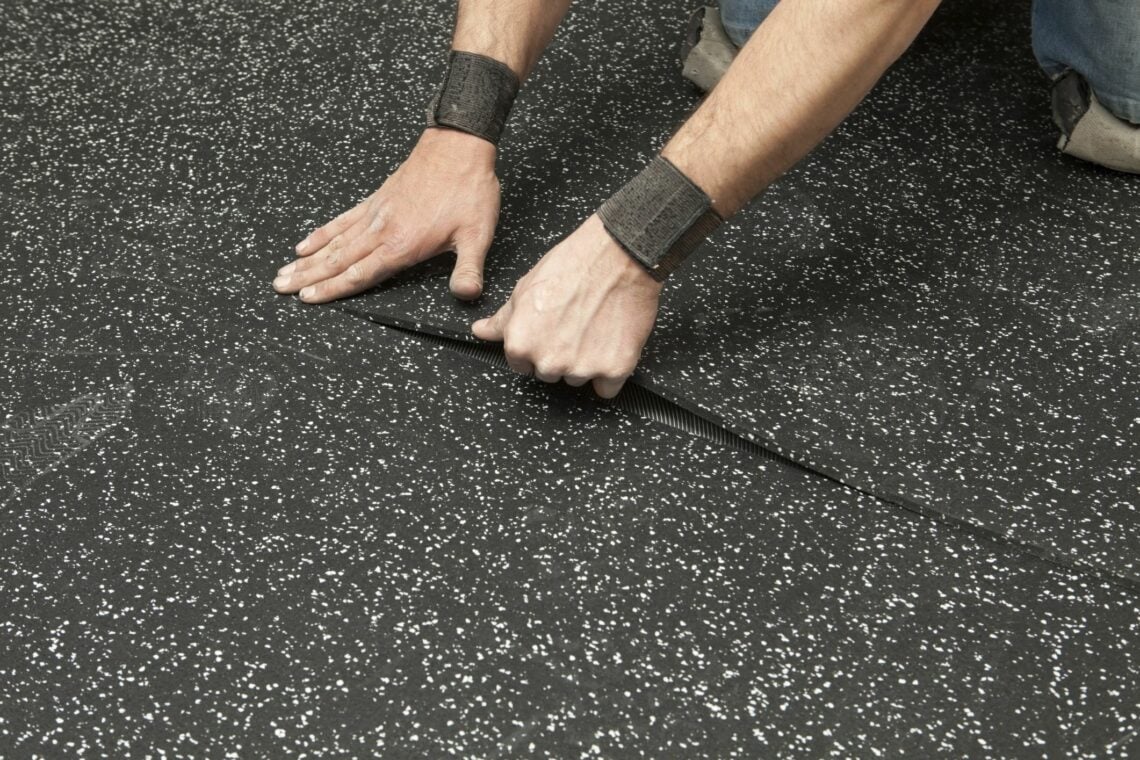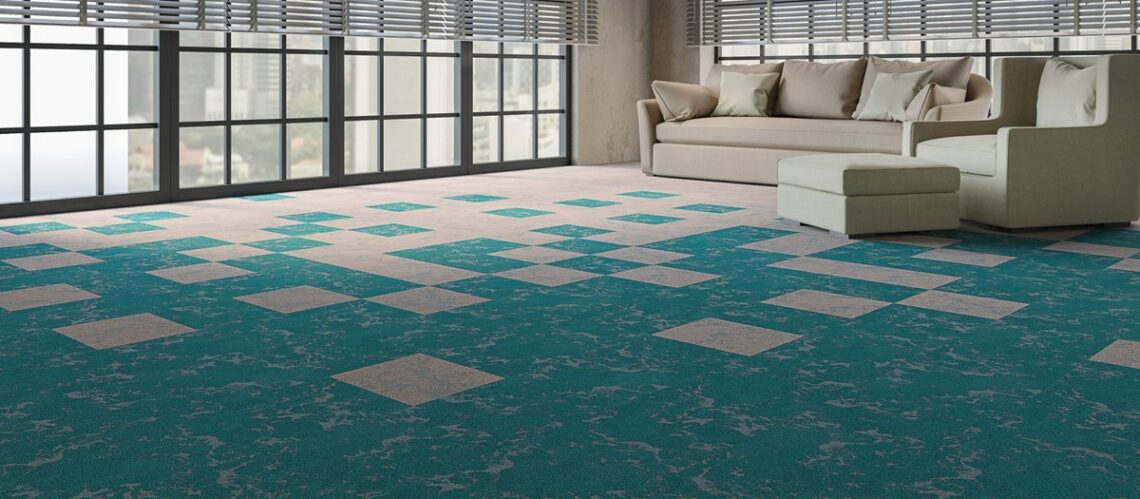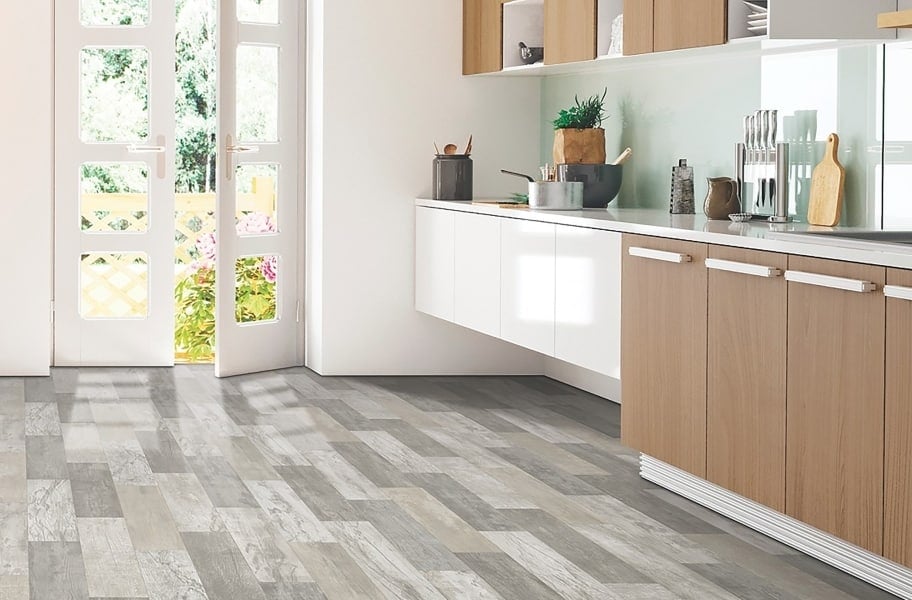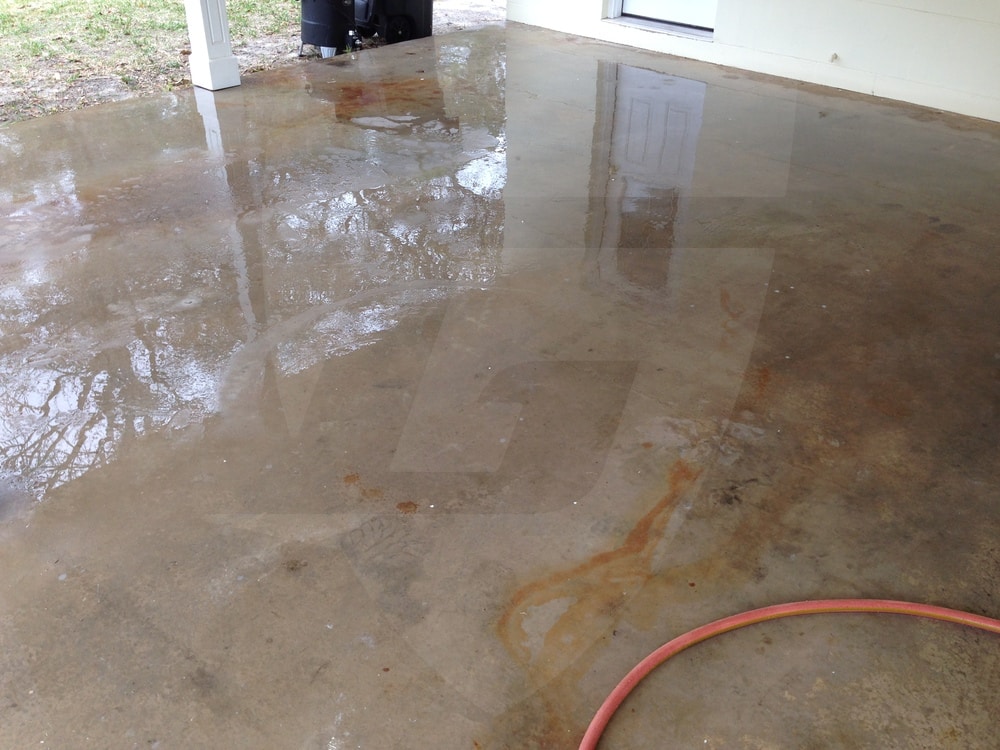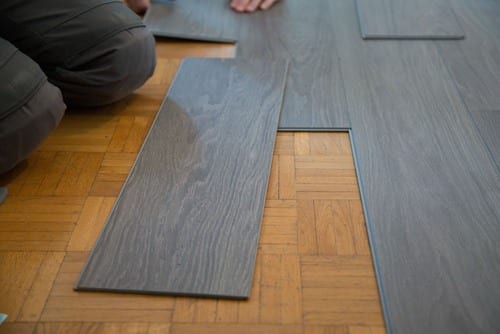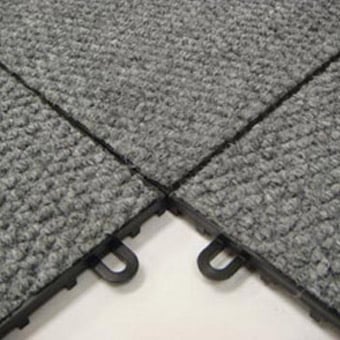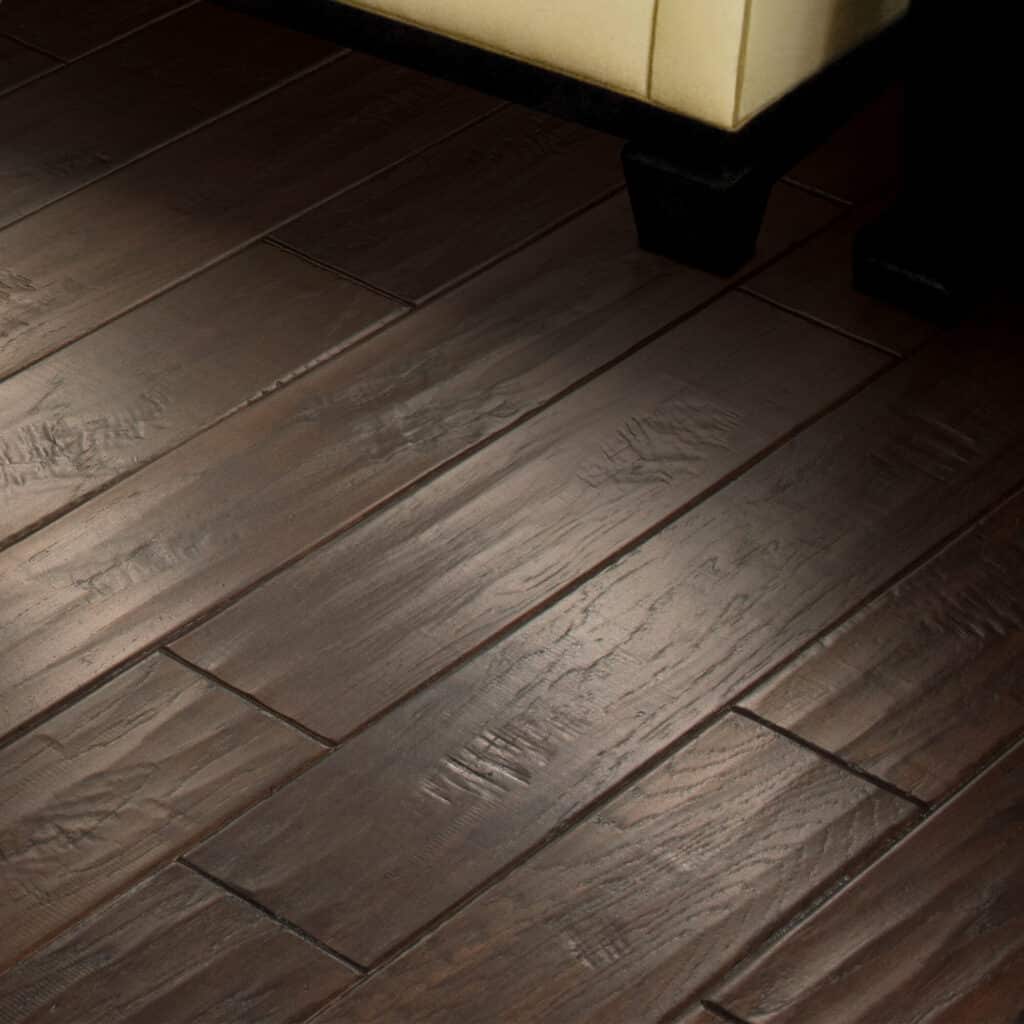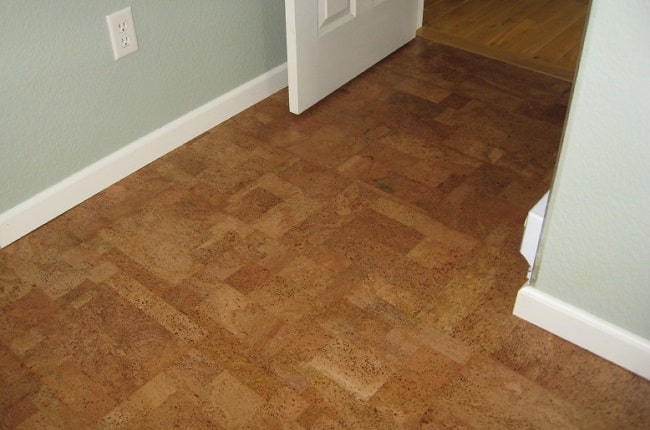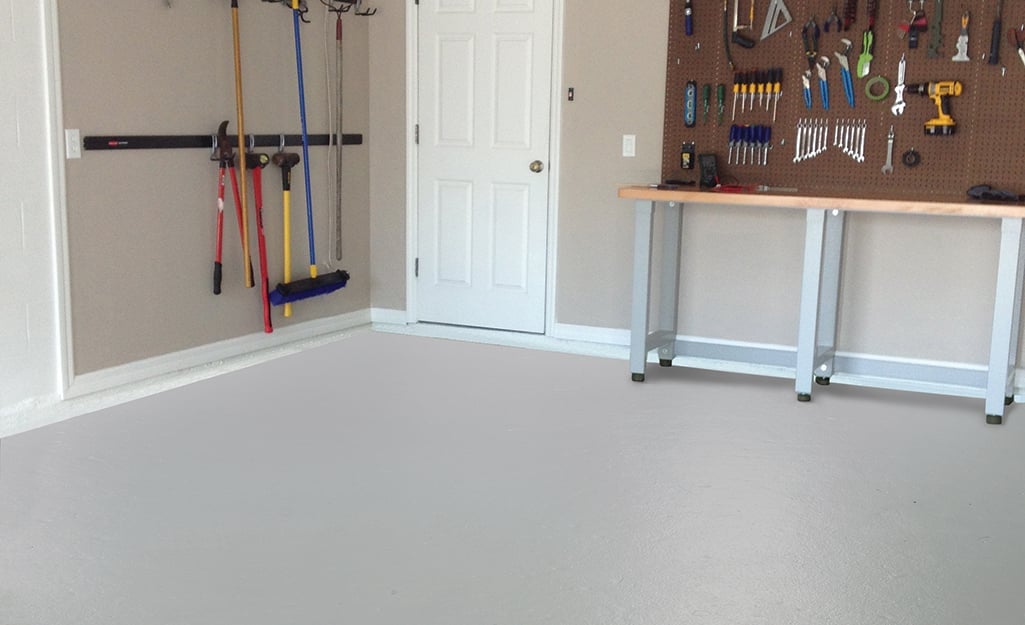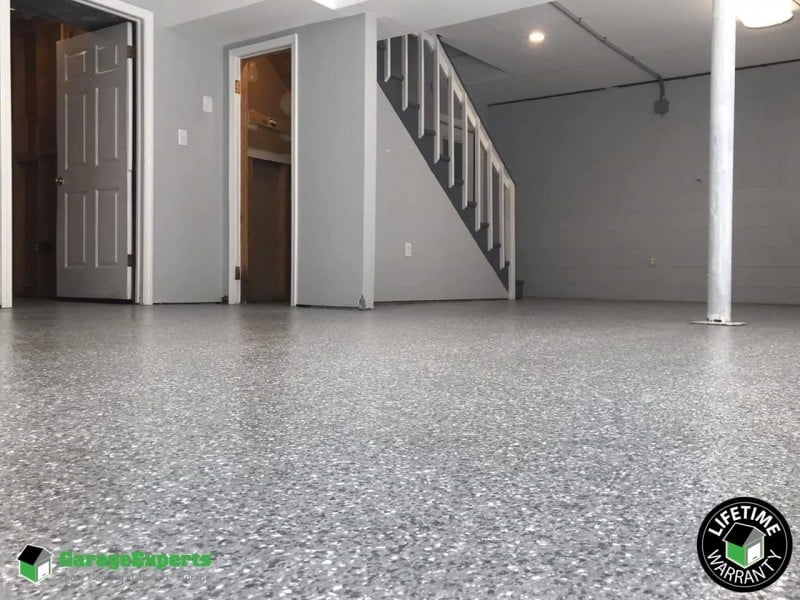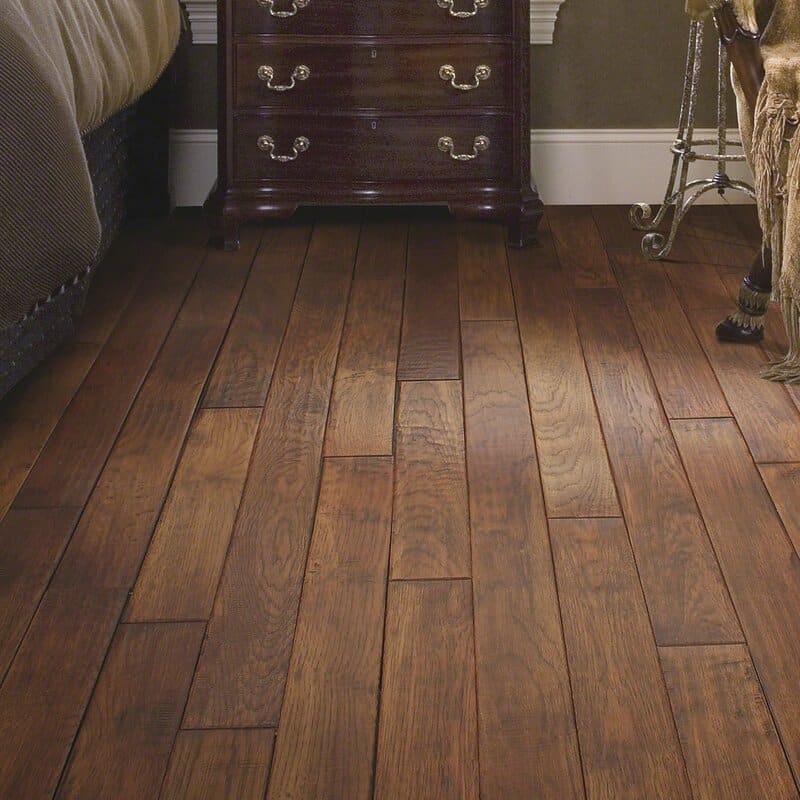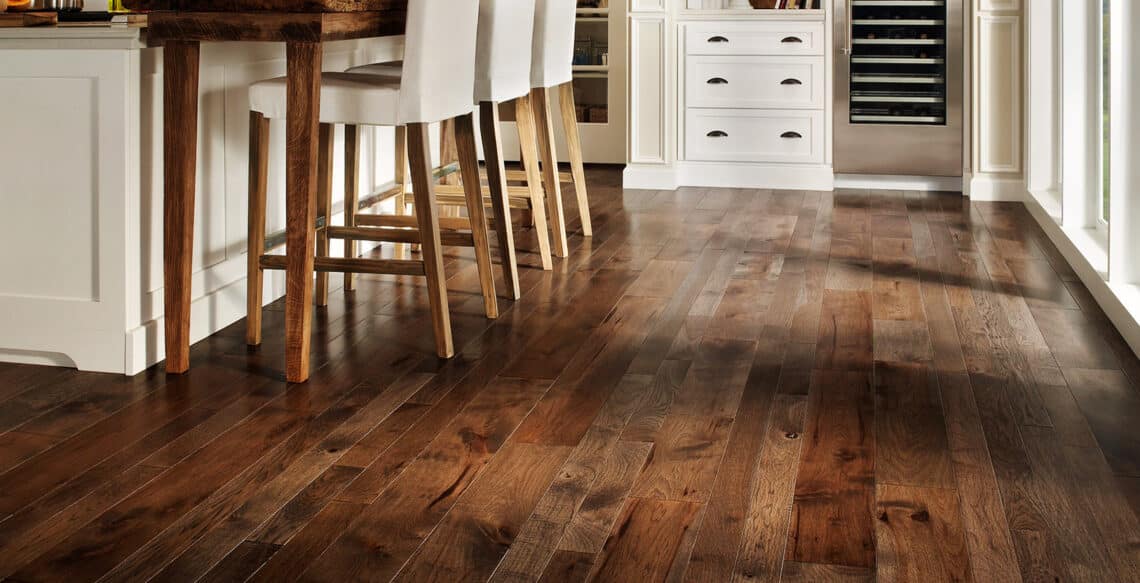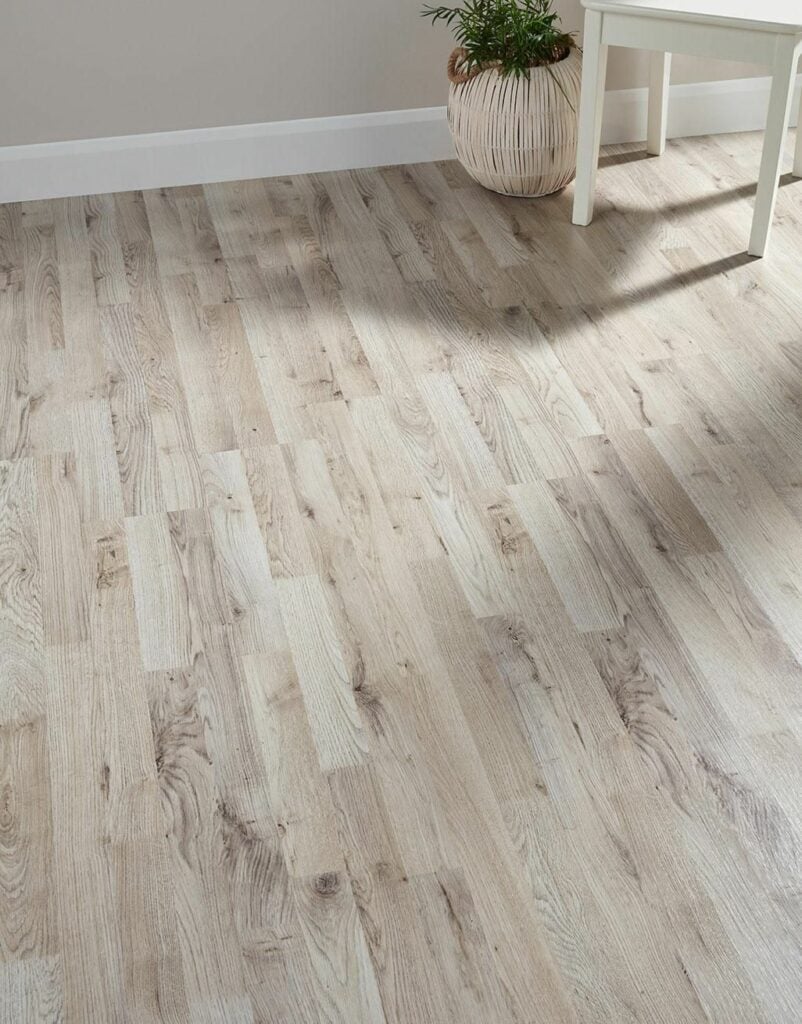Finding the most suitable flooring for your basement can rapidly turn into a research project, leaving you confused and indecisive.
There are several factors at play because basements are usually dark, cold, and damp places that have seen the least improvement in the entire house. Also, they’re prone to flooding and water damage.
Therefore, it’s tricky to find the right type of flooring, as ideally, you’d want it to last while holding up against moisture, mold, and other challenges. Most basements have a concrete surface, and they’re usually uneven due to lack of maintenance.
That said, not all basement flooring options are suitable for that kind of environment. So, we’ve put together a list of the 14 best basement flooring options right now to help you find something that’ll fit your requirements and budget.
Without further ado, take a look at them now.
Basement Flooring Options to Consider
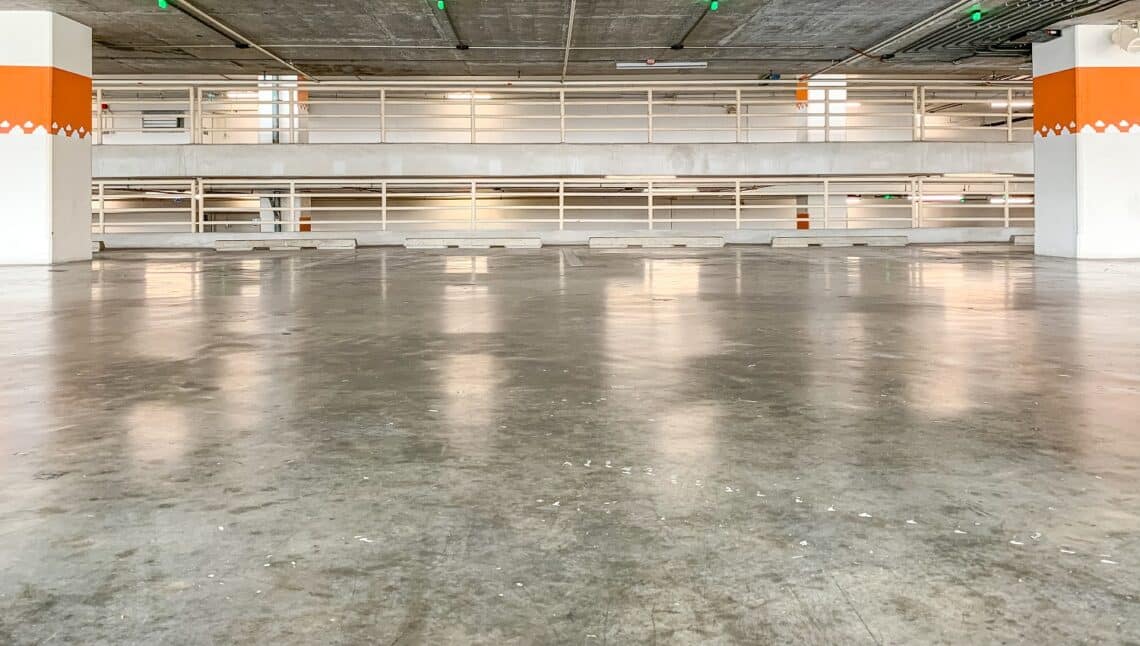
Engineered Vinyl Planks (EVP)
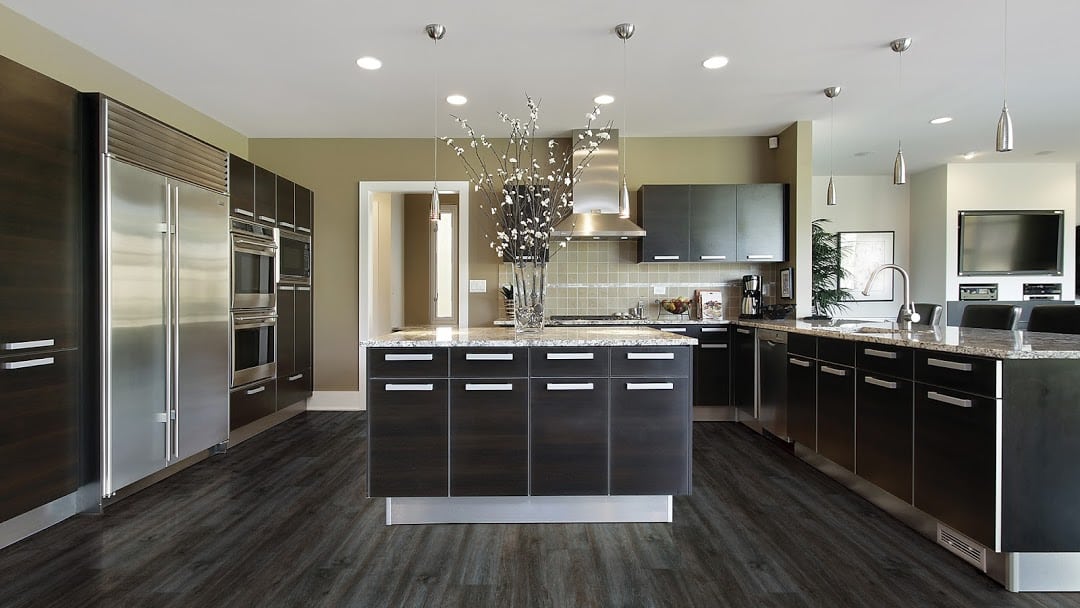
Engineered Vinyl Plank is a top choice mainly for its sophisticated appearance and overall durability. It resembles hardwood flooring, but it’s waterproof. Furthermore, it also includes a cork underlayment that provides cushioning, insulation, and sound absorption.
This is a relatively new flooring variety and is sometimes referred to as luxury vinyl planks. We recommend investing in this flooring type if you want your basement to hold up against water and moisture.
If you’re a DIY enthusiast, you can save some costs and install the floor yourself. Just look up some videos online, and you’ll know where to begin. EVP is available in both natural wood plank designs as well as fashionable tiles.
That said, it’s suitable for basements, kitchens, entryways, and basically any other place that receives moisture or may get wet. However, this product creates a floating floor, so it is not the best choice if your subfloor is uneven, as in that case, it may wobble or bounce a little.
Please note: If you are installing EVP on a concrete slab, you must put a vapor barrier between the foundation and flooring. While it’s naturally waterproof, sometimes underground hydrostatic pressure can push water up from the foundation. This entraps water between the foundation and the vinyl.
Although not that common, it may happen during snow melts, excessive rain, or storms. However, once the water is lodged between the layers, it could cause mold or eat away the cork underlayment. So, just add a thin vapor barrier, and you’re good to go.
- Natural look and feel
- Waterproof material
- Affordable option for DIY enthusiasts
- Durable, thick wear layer
- Creates insulation like conventional flooring
- Floor can bounce if the sub-floor is bumpy or uneven
- Higher material costs than other vinyl
Tile plank floors, ceramic or porcelain tiles
First and foremost, tiles are waterproof. And that’s great if you’re looking to avoid water damage in the basement. However, if you live in a cold climate area, they can get uncomfortably cold for your bare feet.
On the contrary, they’re easier to clean and maintain, and you need not worry about durability. You can choose from a variety of styles, but if you want to follow the trend, tile plank flooring is the way to go.
Even though it’s more expensive, considering the labor and prep work involved, tile flooring lasts very long and is worth the hassle.
Make sure that you install the tiles directly over the concrete surface (or cement board). If you put it on plywood (or any other wood surface), your flooring will crack when the plywood expands or contracts due to fluctuating temperature or humidity.
You should also ensure that the subfloor is level to prevent the tiles from cracking. If you do not even out the surface, the tiles won’t line up and will leave gaps between the planks. Also, you might end up stubbing your toe, which is very painful and annoying.
- Waterproof and durable
- Improves your home’s saleability
- Multiple designs, patterns and color options
- Easy to clean and maintain
- May require extensive floor prep
- Reflects sound
Carpet
If you’re working on a tight budget, carpet flooring is the ideal solution. Besides, carpets are super flexible and versatile, as they can work over all types of subfloors. So, if you have an uneven surface that you’d rather leave as it is, opt for carpets to camouflage imperfections seamlessly.
Moreover, it’s softer and warmer than other conventional floorings. In fact, if you’ve overactive children at home, running amok, carpet is the safest option for steps.
However, it comes with a list of downsides that are quite difficult to ignore. For instance, it collects dirt and gets stained easily, making it quite difficult to clean. Also, carpets wear down faster and need to be replaced.
Having said that, even if you can deal with this bit, its lack of waterproofing capabilities can be a real menace. So, if your basement has flooding issues, carpet is hardly an option anymore. Furthermore, it’s not suitable if the place gets a lot of moisture, as then it could lead to mold, mildew, or growth of dust mites.
Note: If there’s very little moisture in your basement, you may upgrade your carpet cushioning by getting one with a moisture barrier.
No matter what, never use a rebond carpet cushion over concrete. It rapidly turns into a breeding haven for bacteria and doesn’t sit properly over concrete.
- Inexpensive option
- Softer, warmer and comfortable on the feet
- Camouflages uneven subfloors
- Safe for stairs
- Not waterproof
- Gets dirty easily and difficult to clean
Rubber flooring/rubber interlocking gym tiles
Rubber flooring in basements has become increasingly popular, thanks to their low maintenance features. To begin with, it’s a superb option if you want to have a gym or exercise area in your basement. Not only are these interlocking tiles, excellent shock absorbers, but they are also waterproof.
Also, it’s a cinch to install. Just think of it as a full-size jigsaw puzzle and put it all together. In case your floor gets wet, simply pick up the tiles and put them out to dry.
Usually, rubber floor tiles are quite thick (the standard size being 3/8″ or 8mm), but you can invest in thicker options as well. Therefore, if your subfloor is not in the best shape, you can use thick rubber tiles to perfectly conceal the affected areas. You may choose one color or get two or more to create an impressive pattern.
Another option (also a little cheaper) is soft rubber foam tiles (EVA foam). Typically, these tiles are used for babies and little children. While they aren’t as durable as high-quality rubber tiles, they do serve a purpose. Long story short, you can put them atop tile floors to make the surface softer and warmer.
- Waterproof; dries quickly
- Easy to install
- Softer and comfortable on the feet
- Suitable for gyms
- Usually available in black
- Quite heavy
Carpet tiles
If you want to strike a bargain between carpet and tiles, this is undoubtedly the best option. For starters, they absorb less moisture than carpets, due to their composition and backing. Furthermore, carpet tiles are easy to replace, so even if a couple gets stained or too dirty, just replace them without taking apart the whole area.
Also, if you’re keen on improving the aesthetics, carpet tile flooring is the ideal choice for the purpose. In fact, you can experiment and choose from a wide range of styles. There are certain patterns that conceal the dirt, while the colorful ones create interesting decor.
Depending on the look you have in mind, you can always find something that will blend with your basement interiors perfectly.
Nevertheless, they are more expensive than regular broadlooms (wall-to-wall carpet) but still cheaper than hard surfaces. Also, it’s not recommended for use on steps as ideally matching wall-to-wall carpet is preferable.
Lastly, carpet tiles do not fare well in moist environments as the pressure-sensitive adhesive tends to lose its strength over time.
- Available in a variety of colors, styles, and patterns
- Easy to replace in parts
- Absorbs less moisture
- Enhances interior decor
- More expensive than wall to wall carpet; can’t be used on steps
- Pressure sensitive adhesive wears down in damp areas
Sheet vinyl
Sheet vinyl is another budget-friendly choice on the market. Although it costs more than carpeting, it’s still a lot cheaper than hard flooring options.
It’s also referred to as resilient flooring, but it’s different from linoleum, which is an eco-friendly surface material, comparatively thicker and expensive. Simply put, sheet vinyl is a waterproof, nearly impervious material suitable for places that get damp.
Sheet vinyl is a bit old-fashioned and looks kind of inferior, so it may not be the first choice for most people. Nevertheless, it requires substantial floor prep (smoothening the subfloor), as otherwise, the surface of the subfloor will break through.
Usually, sheet vinyl comes in 12 ft rolls. In case your basement is wider than 12 ft, you’ll need a seam, and have to buy extra rolls to cover the area. Make sure to purchase sufficient material to match the repeating pattern flawlessly.
If you want to go the DIY route, make sure you have the right tools and the adhesive for the job. Or, hire an expert for the task as honestly, it’s harder than it looks.
- Inexpensive; suitable for damp places
- Waterproof material
- Warmer than tile or concrete surfaces
- Old-fashioned and cheap looking
- Requires a lot of floor prep
Stained concrete or acid-etched floors
The process of installing a new floor is too elaborate, and your finances can take a serious hit. So, if you want to improve upon the existing surface, stained concrete is the ideal option. It looks nothing short of grand and adds a snazzy touch to your interiors.
You’re most likely to find stained concrete/acid-etched floors in commercial buildings. They impart a luxurious radiance and give your interiors a complete makeover, unlike other flooring options.
Therefore, if you want to make things more visually appealing, we suggest investing in this affordable option. Unlike paints that create an opaque appearance, the stain permeates the concrete surface and develops translucent tones that vary across the expanse.
With this, you can be as experimental as you want. You may opt for neutral hues or play with multiple colors, creating fun patterns on the floor. Unleash your inner artist and go wild!
- Moisture resilient flooring
- Does not require a subfloor
- Users can create colorful design and patterns
- Get uncomfortably cold
- Poor sound insulation
Glue down vinyl planks or tiles
When it comes to vinyl, EVP is the top choice. However, EVP is not the most practical idea in certain places, especially if the subfloor is not level. As mentioned earlier, engineered vinyl planks are floating materials, so if the surface underneath is bumpy, it may bounce. So, if you want to avoid that annoyance, here are some solutions.
Alternatively, you can opt for vinyl that can be glued to the floor. The best part is that it can work over wavy or uneven surfaces.
But you must keep in mind that glue-down vinyl will have the same uneven texture if the subfloor is irregular. So, it’s best to use self-leveling cement for the purpose. Besides, smoothing and leveling the floor is a costly affair that homeowners usually avoid when renovating the basement. People prefer to cut corners here.
With glue-down vinyl, you can pick from different options. The best-performing ones, however, are the luxury glue-down vinyl. Furthermore, they rank high on durability and are waterproof. While there are cheaper varieties available as well, they’re usually thinner and not as hard-wearing.
Other than that, you also have another inexpensive option called Vinyl Composite Tile (VCT). Typically, they are 12 x 12 rigid tiles (comparatively thicker), often found in some restaurants, schools, and laundromats.
Nevertheless, they require some amount of floor prep for desirable results. Even if you want to avoid the floor leveling costs, you’d be wise to apply skim coats to smoothen out affected areas. Otherwise, the imperfections will be visible through the vinyl.
VCT is available in multiple colors and patterns, so you can be as adventurous as you want. Create your own unique look and find something that will best complement your existing decor. In fact, if you’ve excess from the project, you can use them in a playroom or nursery.
- Works on wavy and uneven floors
- Premium varieties are more durable and waterproof
- Inexpensive; available in multiple colors and patterns
- Warmer than tile or concrete floors
- Cheaper ones are thin and not waterproof
- Not suitable for a do-it-yourself project
Interlocking raised modular vinyl or carpet tiles
Usually, the basement is one of the places in homes that experience maximum water damage. That’s why it’s essential to have waterproof flooring to prevent further damage. Therefore, we recommend using interlocking flooring tiles available in different build materials, like vinyl and carpet.
The finished surface is slightly raised from the floor by pegs, allowing air to circulate underneath. Therefore, the ground moisture that permeates through the slab can dry up eventually. Furthermore, these interlocking materials are waterproof and mold-resistant, thus capable of withstanding basement floods.
Again, they’re very much like enlarged jigsaw puzzle pieces, snapping into place with minimum effort. Also, you can easily remove them when needed. Since they are raised, interlocking carpets and tiles create air pockets that act as insulators to keep the area warmer (as opposed to stepping over a concrete floor).
Apart from that, you can sweep subfloor imperfections under the carpet tiles, thanks to their raised structure. But if the disparity is more than ¼ inch, you will need to undertake some floor prep, or else the tiles won’t align properly.
Note: most modular tiles come with proprietary patents, and you may not be able to purchase them in stores (but only acquire them along with installation services from certified contractors).
Some stores do sell look-alikes in stores, but their viability and performance may vary.
- Generally inexpensive
- Provides insulation and prevents water damage
- Works on uneven and imperfect subfloors
- Easy to install
- Difficult to find
- Inferior looks
Engineered hardwood floors
While a solid hardwood floor is not an option for basements, you can opt for engineered hardwood floors instead. For starters, engineered hardwood flooring is designed in perpendicular planks so that there is minimal expansion and contraction.
Depending on the application, engineered hardwoods can float or be glued over concrete subfloors. However, make sure that the subfloor is entirely smooth and level. If you’re gluing the planks on an uneven surface, they will pop up eventually as the adhesive loses strength.
Likewise, if you’re installing a floating floor over an irregular surface, the planks may bounce.
Important note: While engineered hardwood flooring is undoubtedly better than laminate floors, given that they expand/contract less, if you get moisture in the basement, it’s not a feasible option. It’ll only be a matter of time until you face problems. So, we advise using a moisture meter to test and know in advance whether you may have moisture issues in the future.
Also, we recommend using a dehumidifier to control the amount of moisture in the air. Lastly, it’s more practical and safer, which makes it an instant favorite among homeowners.
- Has a high end, sophisticated look
- Improves the value of houses
- Warmer on feet compared to tiles
- Minimal expansion and contraction
- More expensive; not water
- Requires elaborate floor prep
Cork Flooring
Cork flooring is another floating option with space between the concrete surface and the flooring. This prevents moisture from getting trapped in between the layers. Also, since it’s hypoallergenic, it’s a suitable choice for people suffering from asthma or allergies.
Other than that, it’s pretty low maintenance, which is great considering that you’ll be installing it in your basement.
For cleaning, you may either use a vacuum or a broom. However, if the floor needs moping, make sure to use only water-based cleaning products. Anything else could damage the cork flooring.
While it’s prone to denting, cork flooring is sturdier than both carpet and hardwood flooring types. Also, it has a carpet-like texture, making it comfortable and soft on the foot. So, if you want to turn your basement into a comfy and cozy space, this is a suitable option.
When renovating the basement floor, pay attention to the acoustics, as you don’t want the sounds to amplify or echo down there. Thankfully, cork is an excellent sound absorber, keeping the decibel levels low.
Even if the flooring takes some hits, you can sand and stain it to improve its appearance. Therefore, cork flooring is a long-lasting, sustainable option that can truly give you your money’s worth.
However, cork is susceptible to temperature changes and water damage, so bear that in mind during installation.
- Hypoallergenic material
- Sturdier than carpet and hardwood
- Comfortable on the foot
- Improves the acoustics in the basement
- Susceptible to temperature and water damage
Radiant Floor Heating
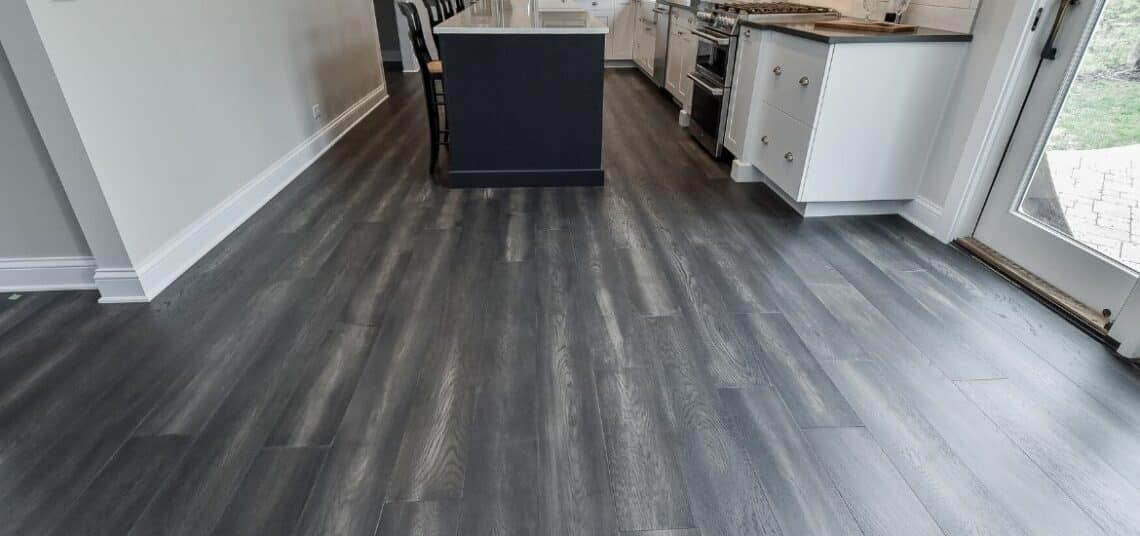
Radiant floor heating is excellent for areas that experience freezing winters. If your basement turns into a cold and bleak place, around December, we suggest investing in this option. This kind of heating is generated either from pipes or electrically through wires installed on the floor.
Even if you have a radiator in your basement, the heat conducted through the unit is only good enough to warm the areas closest to it. Therefore, if you want the entire space to be comfortably warm, radiant heat flooring is the way to go. It evenly dissipates heat across the room and keeps you toasty throughout the winter.
- Easy to install
- Uniform heat dissipation
- Non-allergic
- Silent heating function
- Exist flooring has to be removed
Paint
This is easily the least expensive option on our list and also the most DIY-friendly. So, if you’re looking to cut corners and plan to use the basement as a workshop, just get to work with a bucket or two of paint.
The important bit here is to buy paints specially formulated for application over concrete floors. That said, be sure to follow all instructions to the T while preparing the surface, coating the floor, and drying time.
- Easy to apply
- Cost-effective option
- Not the most durable choice
Epoxy
Epoxies are 2-part coatings that can be applied like paint, but it’s thicker, smoother, more durable, and more eye-catching than concrete paints.
You can experiment with various designs and styles and even distribute colorful flakes, sand, and wood chips across the surface after application. These bits add texture and color to the surface, creating an attractive finish on your basement floor.
The final look is awe-inspiring and nothing short of extraordinary. Besides, it’s a snap to maintain since hardly anything sticks to the surface. Furthermore, epoxy floors are highly resistant to almost everything, be it oil, gasoline, bleach, cleansers, chemical cleaners, and more.
Other than that, they are heat and water-resistant, making them a viable choice for most homeowners. The best part is that these floors are resistant to bacteria and germs, making them incredibly easy to sanitize.
- Resistant against oil, gasoline, chemical cleaners, etc
- Thicker and more durable than paints
- Easy to sanitize
- Heat and waterproof
- Temporary flooring solution
- Extensive and tedious application process
Sub-floor Options
Many floor options like tiles, rubber flooring, paint, and epoxy, can be directly put over the basement’s existing poured concrete floor, as long as the surface is in good shape. Nevertheless, this direct installation will create a cold surface that becomes uncomfortable in the winter.
While a cold floor is not much of a bother, when the basement is used as a workshop or workout area, it’d become an issue when used for family purposes. For instance, if you’re renovating the place for use as a home theatre, playroom, or spare family room, it’s best to have a subfloor installed above the concrete.
A well-made subfloor will render a flat, smooth, insulated substrate for the finished floor of your liking, providing more warmth underfoot. Typically, basements require a special type of subflooring that will hold up against mold and moisture.
The best subfloor tiles include drainage space for moisture accumulated on the concrete, superior foam insulation, and a composite surface that acts as the substrate for final flooring.
In addition to choosing the right subfloor, considering soundproofing for both floors and ceilings is essential for a comfortable and quiet living environment in the basement. Sound insulation is particularly crucial when the basement is used as a living space or entertainment area. For guidance on reducing noise transmission through ceilings, consult our guide on soundproofing basement ceilings.
Flooring Types You Must Avoid in Basements
While you may find basements with such floorings, as design experts with years of experience, we advise you to steer clear of these options.
Solid hardwood flooring
Solid hardwood flooring is a terrible choice for basements. Mainly because you’ll be needing a 3/4″ plywood subfloor to nail the solid hardwood into. Even though it is possible to install them on concrete or sleepers, it’s a lot of hassle and will add to your upfront costs.
Besides, if your area experiences a wide range of temperatures throughout the year, coupled with fluctuations in humidity, the floors can easily warp. And, usually, basements are prone to moisture and water damage (even when properly sealed), so it’s just not worth the risk.
If you notice carefully, you will find that all manufacturers’ warranties are invalid for solid hardwood if used in below-grade areas (even if a section of the floor is on ground level). Thus, taking a chance may end up costing a lot.
Bamboo Flooring
Again, this is one of the least suitable choices you can make for basement flooring or for that matter anywhere in the house. The appeal of bamboo flooring still lies in the fact that it’s cheap. And some ‘experts’ use the eco-friendly card to spin tall tales about their viability.
But, for once and all, we want to set the record straight. Bamboo does not hold up in the long run, no matter who tells you what about it. On the contrary, it dents and scratches easily and has no resilience against water or moisture.
Damaged bamboo is a real menace, and you can see the signs right after 1-2 years of installation. Honestly, it’s hard to find clients happy with bamboo floors. It’s hardly durable and definitely the worst option for basements as they tend to have more moisture.
Besides, it’s not even eco-friendly, as some professionals would want you to believe. A lot of adhesives are used for installation, and they often release toxins like VOCs. Also, if you’re looking to cut down costs, there are several better options than bamboo. After all, there’s no point going cheap only to undergo total replacement later.
Laminate Flooring
Laminate floors are built using recycled hardwood, and they usually have an MDF (or HDF) coreboard. However, the biggest glitch is that they absorb moisture, even more than hardwood floors.
Thus, laminate floors are most likely to expand and contract, when you install them in basements. And there’s not much you can do once they expand and warp, or simply absorb moisture. The damage is pretty permanent as the locking mechanism fails, and the boards don’t align.
Also, it’s quite challenging to repair laminate floors as you have to begin from the sidewall and work all the way to the damaged parts. While pulling at them, you’ll end up breaking more pieces and causing more damage. Long story short, it becomes a lost cause with little to salvage.
Furthermore, laminate floors lose their sheen when exposed to moisture over long periods. If you choose to buy laminates to reduce expenses, that’s fine, but don’t expect it to last very long in the basement.
Frequently Asked Questions
What are the best types of materials for basement flooring?
By all means, invest in harder and sturdier materials when it comes to basement flooring. They usually last longer for their ability to withstand moisture, as opposed to softer flooring options. Besides, they’re more hard-wearing and suitable for below-grade areas prone to flooding.
Which options are the most comfortable for basement flooring?
Carpeting is an excellent option if your basement does not have any moisture issues. It’s comfortable, soft, and warmer than most other options. You may also consider carpet tiles if you want to reinforce the foundation in the process.
What can I do to prep my basement before installation?
The least you can do is even out the bumps and irregularities on the subfloor. You can undertake patchwork instead of repairing the whole surface. However, a smooth subfloor goes a long way in ensuring durability and hassle-free installation.
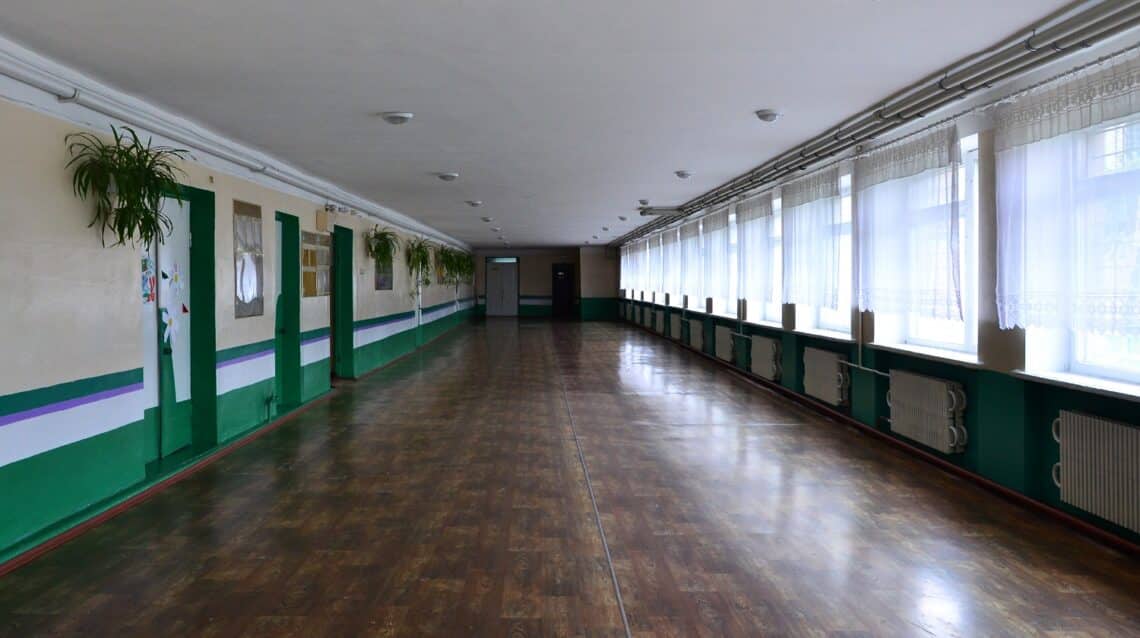
Final Words
And now we’ll be leaving the floor for you.
We hope you can find the most suitable option from our list. While you might have to make inevitable trade-offs with each of these floor types, make sure not to go overboard on your budget.
When you calculate the costs, you must include the expenses incurred after installation. Also, consider the long-term results of each flooring before deciding on one. Most importantly, a lot depends on why you want to install new flooring.
For instance, if it’s primarily a home improvement project for basement waterproofing, you can opt for more expensive options, which will also enhance your property’s value. Likewise, if you don’t have something this elaborate in mind, a DIY quick fix should solve things.
Till next time!
Related Articles
50 Basement Bar Ideas to Rock Right Now
9 Causes of Basement Moisture and How to Fix Them
How to Transform Your Crawl Space Into a Storage Area
Cellar vs. Basement vs. Crawl Space 101 – Differences and Particularities

